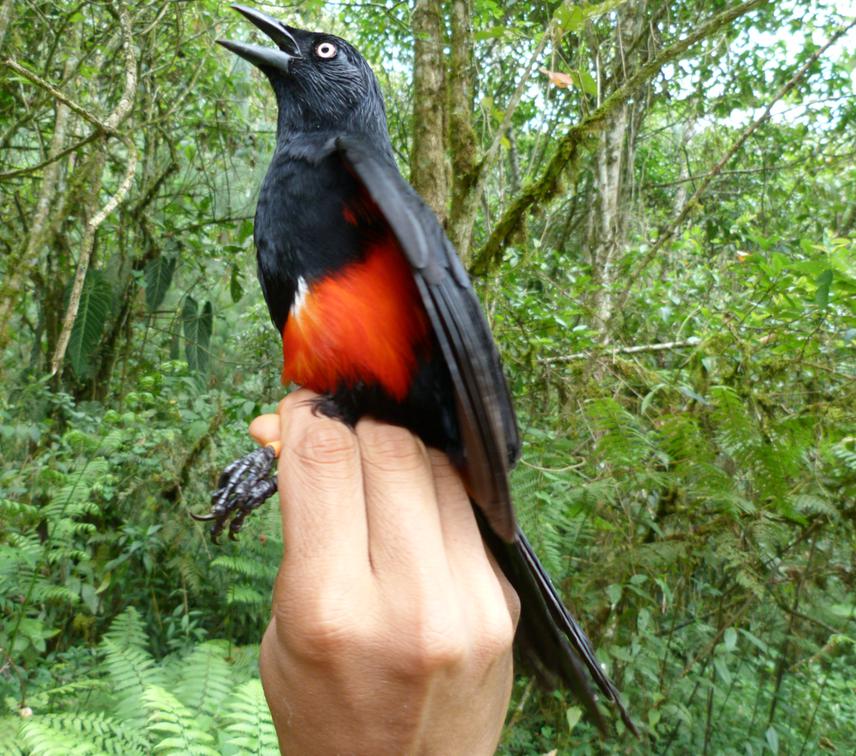Maria Camila Estrada-Florez
Other projects
3 Dec 2014
Functional Traits of Birds: An Approach to Understand the Effects of Fragmentation in the Colombian Andes
The aim of the project is to determine how the breeding activities are shared by the individuals inside the breeding groups of Red-bellied grackle.
It’s well known that neotropical birds’ natural history and biology in general are poorly known, and this ignorance regarding their minimal requirements makes really hard to understand the process and the relationships with their environment.

Banding an adult of Red-bellied Grackle.
The Red-bellied grackle is a monotypic species, endemic of Colombia and Endangered (EN). In recent studies (Ocampo et al. 2012, in press), we have registered that the Red-bellied grackle breeds cooperatively and that there is some kind of work division among the individuals of a breeding group. But, since the information available for this species’ breeding biology is practically in existent, we must start from scratch. With our work, what we primarily want is to increase the knowledge of this endangered species, with special regard to their breeding ecology and behaviour, in order to understand the pressures under they habit.
Our Project is also headed to describe the cooperative behaviour and patterns of the Red-bellied grackle groups, in order to register how the breeding activities are shared among the individuals inside the breeding groups; how much of the work is being done by females or juveniles. We are also interested in knowing how these groups behave outside the breeding season in the Recreational and Ecological Park Alto de San Miguel, and how the breeding groups are formed every breeding season, since they can form large groups up to 30 individuals in the non breeding season, and it is not clear if the same individuals regroup every time or if the composition can vary.
The last gold we have is to demarcate the breeding territories of the groups and find out the average size of a Red-bellied grackle group’s territory, we hope that this information will come in useful when the local authorities start to evaluate an adequate conservation strategy, that not only will protect the Red bellied grackle, but also several species threatened by habitat fragmentation and the replacement of the original forest with cattle lands.